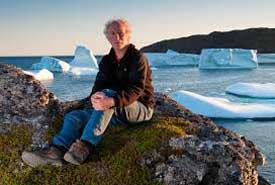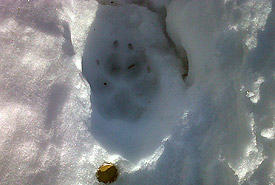Lions and coyotes and bears, oh my... and sheep, and wolves, and people: A workshop with Dr. Alistair Bath

Alistair Bath, human dimensions expert (Photo courtesy Mr. Bath)
“We have two ears and one mouth, so we should be listening twice as much as talking.” That’s Dr. Alistair Bath’s refrain.
It was my sixth day of work at the Nature Conservancy of Canada (NCC), and I got to attend Bath’s workshop, “The Human Dimensions of Conservation Management.”
BC’s Communications Manager, Lesley Neilson — my supervisor — found out about Bath when NCC’s Atlantic Region held a similar workshop, which Jennifer White blogged about in December. Lesley was intrigued and invited Bath, a geography professor at Memorial University, to Victoria. NCC staff travelled from Alberta, Saskatchewan, Manitoba and Ontario to participate.
Members of other conservation organizations, folks from municipal and provincial government, and individuals simply interested in the material filled out the group. All 40 attendees met at the beautiful forested campus of Royal Roads University on May 9 and 10.
To me, the prospect of two interactive days discussing conservation was daunting. Unlike many NCC staff, I have no background in biology, ecology or environmental studies. Instead — writing and gender studies. But as it turns out, human dimensions is a social science, so I wasn’t as far behind as I’d thought.
At its core, human dimensions is a field of listening to and working with people to solve conflicts, said Bath, who has worked in natural resource management and human-wildlife interactions for over 25 years. During his undergraduate degree in the 1980s, Bath came to BC from Ontario, curious about the helicopter wolf hunts happening in the province. As he discovered the different groups involved, he wanted to explore their key concerns.
"Looking back, I was doing human dimensions work, but I didn’t know it at the time,” he said with a laugh as we chatted at a picnic table in Beacon Hill Park after the workshop.

Wolf track (Photo by NCC)
He learned formally about human dimensions as a masters student in Wyoming. Dealing with wolf-related conflict in Yellowstone National Park taught him that conservation isn’t just about managing the wildlife or the land; it’s also about managing the people.
Environmental organizations are doing great ecological and biological research, Bath said. But if people are at the centre of any given problem, then science alone doesn’t go far to resolve conflict.
Enter the applied part of human dimensions: a facilitated workshop approach Bath and his students have used in Croatia, Slovakia, Germany, Brazil, Alaska, Manitoba, the list goes on. Interest groups meet about a problem with the goal of reaching consensus. What does consensus mean? An agreement that includes compromises and prioritizes the groups’ most important values.
Values are crucial, because values lead to behaviour. The human dimensions approach to conservation says to look at the big picture first and get at the root of a conflict, rather than solving details superficially.
“In conservation, we’re losing, and what we’re currently doing isn’t [always] the right approach,” said Bath. “Maybe collectively we can find answers.”
How can human dimensions help conservation?
Some NCC staff who attended the workshop hoped to get specific feedback on issues we are dealing with. But Bath said, “My role isn’t to come in and say, ‘the residents of [the region in question] should do this or shouldn’t do that.’ What I’m here to do is train people to effectively listen and learn...so that they can find the solution to issues that are important [to them].”
One way forward is in communications and education. For effective education, we must understand people’s attitudes, knowledge levels, expectations and beliefs. If we know which value or belief leads to an action — belief that an animal is dangerous, for example, causes a desire to kill it — then in educational campaigns, we focus on promoting or discouraging that belief. The result: behavioural change.
“We’re not going to win the war on habitat loss until people start valuing these landscapes,” said Bath. “To get them to value the landscape, we’ve got to understand why they don’t value it now, what will motivate them to value it, and how we can target messages to affect them.”
On the science end, simply keeping the people factor in mind while working on lands could be helpful. During the workshop’s coffee and lunch breaks, discussion could be heard among attendees: how do we apply today’s learning practically? Many expressed that it will be challenging to shift their science-first approaches in the short term. But conservation, Bath said, is a long-term game.
You can read an article by Dr. Alistair Bath here.


